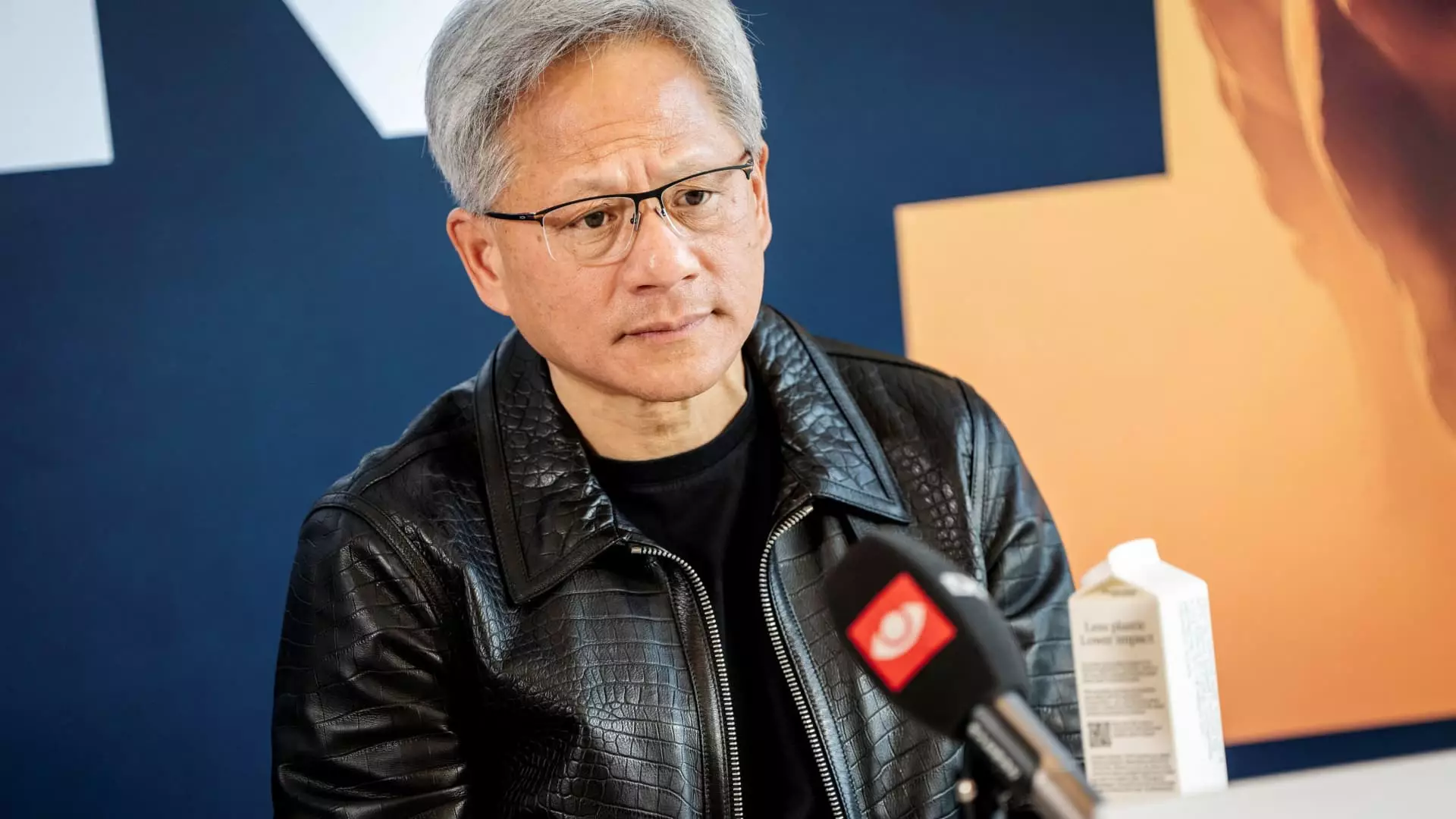In the rapidly evolving technology sector, few entities have been as pivotal to the artificial intelligence movement as Nvidia. With a remarkable 80% share of the AI chip market, the company’s graphics processing units (GPUs) have essentially become the gold standard for generating and deploying innovative AI applications. As Nvidia prepares to unveil its financial results for the third quarter, stakeholders and analysts alike are scrutinizing not only the company’s ability to sustain its aggressive growth trajectory but also how it intends to navigate the waves of competition now surfacing in the AI domain.
Currently riding the wave of a staggering $3.5 trillion market cap, Nvidia is frequently described by experts as venturing into “uncharted territory”. According to HSBC analyst Frank Lee, the company is on a growth path that shows no indications of subsiding. This perspective is crucial as investors look beyond the short-term figures; they want assurances that Nvidia can sustain its remarkable growth well into the future, especially as the artificial intelligence boom marks its third anniversary. The pivotal moment for the company will hinge on the performance and reception of its new Blackwell chip series, which is now being shipped to key industry players like Microsoft, Google, and OpenAI.
The forthcoming third-quarter earnings report extends far beyond just historical data; it demands analysis on the demand and supply dynamics surrounding the Blackwell GPU. Following initial concerns regarding potential overheating issues in some Blackwell-based systems, Nvidia CEO Jensen Huang will be tasked with reassuring investors regarding both product performance and sales projections. Initial estimates suggest Nvidia expects “several billion” in Blackwell sales for the upcoming January quarter, but analysts are cautiously projecting a shipment of approximately 100,000 units in the fourth quarter—a figure that might fall on the conservative side of expectations.
Since Nvidia’s previous earnings announcement, the company’s stock price has increased by nearly 19%, a testament to investor confidence amid ongoing demand for its AI infrastructure and services. The extraordinary eightfold surge in share price since the introduction of ChatGPT highlights a broader market sentiment leaning toward Nvidia’s pivotal role in AI. Yet, with growth rates moderating—122% in recent sales, compared to over 260% earlier this year—questions about ongoing viability loom, sparking debates about whether these high benchmarks can continue to be met.
Predictions for earnings in the third quarter suggest revenues could reach around $33.12 billion, indicating an impressive 83% growth year-on-year, alongside expected earnings of 75 cents per share. However, growing expectations come with increased scrutiny regarding Nvidia’s soaring price-to-earnings ratio, which now hovers near 50, hinting at a potential bubble in valuation driven by AI euphoria.
While Nvidia’s data center business accounted for nearly 88% of recent sales—a staggering indicator of its focus on AI—the company is also grappling with challenges in its traditional gaming vertical, which includes producing chips for the Nintendo Switch. The gaming division is predicted to see only modest growth of around 6%, underscoring the pressures exerted by an aging product line in a youth-dominated market.
Conversely, Nvidia’s automotive chip segment, while still in nascent stages, is gaining traction, with forecasts suggesting a 38% growth to approximately $360 million in sales. The underlying message is clear: future buoyancy for Nvidia will likely hinge on stabilizing its less dominant segments while capitalizing on its thriving data center business.
As Nvidia gears up for what could be a pivotal earnings announcement, the company’s fortunes hang in a delicate balance between sustaining its dominant foothold in AI and managing expectations in other divisions. The next steps taken by the company—particularly regarding the performance of its Blackwell series—will be crucial in shaping its landscape amidst an increasingly competitive environment. Investors will be eagerly watching, hoping for affirmation that Nvidia’s robust growth story is far from over.


Leave a Reply